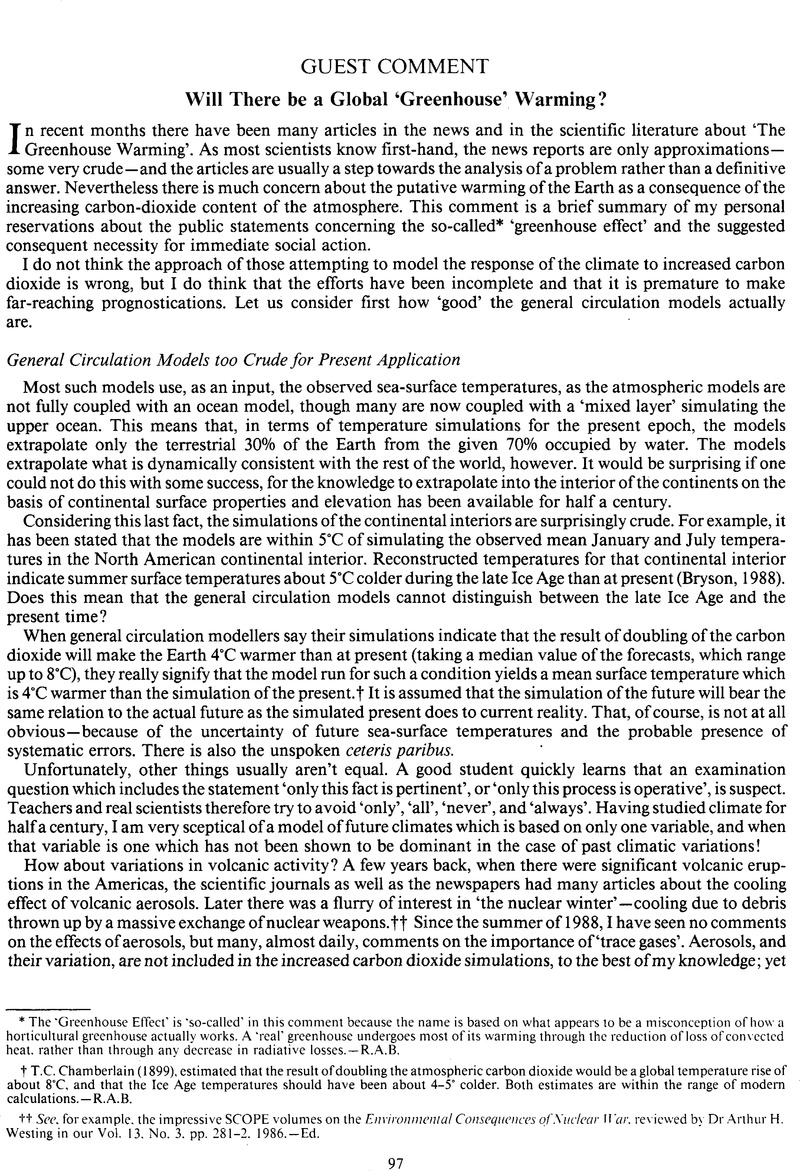Crossref Citations
This article has been cited by the following publications. This list is generated based on data provided by Crossref.
Gilland, Bernard
1990.
Energy for the 21st century: an engineer's view.
Endeavour,
Vol. 14,
Issue. 2,
p.
80.
Fischer, Gad
1990.
Heat Pollution and Global Warming.
Environmental Conservation,
Vol. 17,
Issue. 2,
p.
117.
Bardecki, Michal J.
1991.
WETLANDS AND CLIMATE CHANGE: A SPECULATIVE REVIEW.
Canadian Water Resources Journal,
Vol. 16,
Issue. 1,
p.
9.
Burness, H. Stuart
and
Martin, Wade E.
1994.
Environmental Economics & the Mining Industry.
Vol. 4,
Issue. ,
p.
107.



